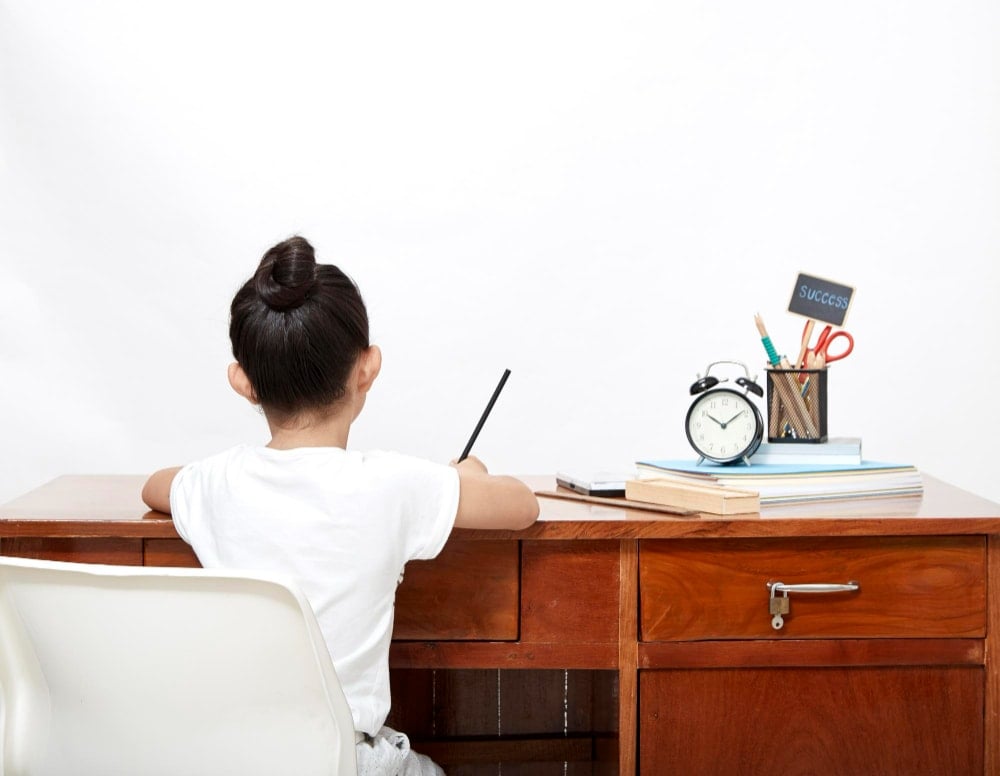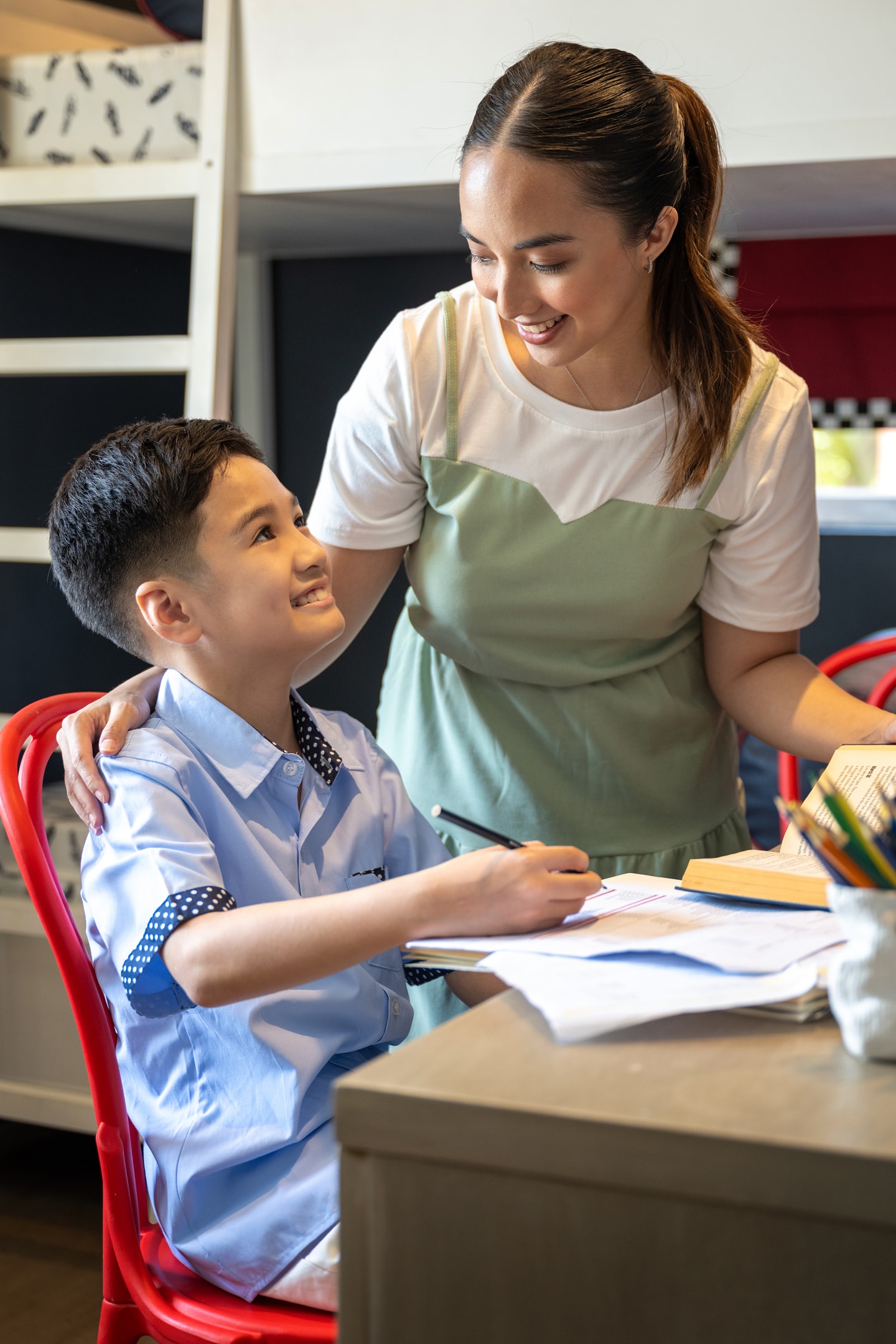The new school year can be both exciting and challenging for families. As children transition from summer breaks to the hustle and bustle of school life, creating a positive learning environment can set them up for academic success.
It can be as small as setting up a quiet study area, developing a growth mindset, or motivating your child to achieve their best. The fact is that a supportive home environment can make all the difference.
Let’s explore how to create a nurturing space that boosts your child’s academic performance, emotional well-being, and overall student success.

Why cultivate a positive learning environment at home
A positive learning environment is not just about physical space, but also the emotional and mental atmosphere that surrounds your child’s educational journey. Research shows that students thrive when they feel supported, motivated, and engaged, both inside and outside the classroom.
When you create a positive environment at home, you also set the foundation for better academic performance and lifelong learning.
Whether it’s reinforcing classroom rules or offering praise for effort, a nurturing atmosphere encourages your child to grow academically, socially, and emotionally.

Building the ideal home environment for learning
While learning is a mental effort, the physical setup of your home plays a huge role in creating a productive learning space.
A well-organized, quiet area free from distractions helps students focus on their homework and study materials. But beyond this, it’s about cultivating an atmosphere of encouragement and positivity.
Organize a dedicated study space
A designated study area helps in creating a positive classroom environment at home. This space should be quiet, well-lit, and stocked with all the necessary learning materials like books, pens, and paper.
A clutter-free space promotes better concentration and also communicates the importance of learning. Ensure your child’s study desk is tidy and free from distractions like smartphones or TV.
Use positive reinforcement to motivate
Praise is a powerful tool. Positive reinforcement motivates students to keep working hard, even outside the school community. Acknowledge even the small milestones in your kid’s academic journey.
Whether they’ve finished a challenging assignment or simply kept their study area organized, praise boosts their confidence and encourages them to take on more challenges.
Positive reinforcement in the form of constructive feedback also helps children understand their strengths and areas for improvement, ensuring student success.
Establish a sustainable routine
Routines help children manage their time better, balancing schoolwork with playtime, rest, and family activities. A balanced daily routine reduces stress, keeps kids organized, and improves focus.
Encourage your child to break their study sessions into manageable chunks, allowing for regular breaks to prevent burnout.
Whether it’s a 30-minute study block followed by a 10-minute break or longer intervals, this structure is key to maintaining a positive mindset towards learning.
You can also introduce your kids to the Pomodoro technique early to develop their time management skills.

How to maintain positive relationships with your learning kids
Strong relationships with family members help create a classroom community at home.
Your child’s academic success and even professional development is influenced not only by the physical environment but also by the emotional support they receive. When your child feels secure and supported, they are more likely to thrive in their studies.
Communicate with them
Open and honest communication is the bedrock of any successful student learning environment. Ask your child about their school day, listen to their concerns, and celebrate their achievements.
Active listening makes them feel understood and build a positive connection that also encourages them to engage better with their schoolwork. A child who knows they have a safe space to share their thoughts will be more motivated to succeed academically.

Make the learning process engaging
Encourage your child to ask questions, seek help when needed, and actively participate in class discussions. Active engagement boosts critical thinking and keeps students involved in their learning process.
You can also help them see the relevance of what they’re learning by connecting lessons to real-life situations. This approach does not only engage students but also deepens their understanding of the subject matter.
Give emotional support and encouragement
Emotional support plays a pivotal role in student achievement. When you support students emotionally, they feel safe, valued, and understood are more likely to succeed in school.
Always encourage your child to keep trying, even if they face difficulties. Let them know that making mistakes is part of the learning process, and that resilience is key to their academic success.

How to make learning fun
The key to a positive back-to-school experience is making learning enjoyable and accessible. In a time where there are more distractions than ever, learning doesn’t have to be boring. Here are several ways you can engage your child more effectively in their education.
Model a “growth mindset”
A growth mindset is the belief that abilities and intelligence can be developed with hard work and perseverance.
By promoting this mindset, you encourage your child to view challenges as opportunities for growth rather than obstacles. This encourages student success and boosts academic performance. When your child says, “I can’t do this,” reply with, “You can’t do it yet—let’s keep practicing together.”

Adapt to your child’s learning style
Each child has a unique learning style. Some may be visual learners, while others may excel through hands-on activities or verbal learning. Pay attention to how your child learns best and adapt your approach accordingly.
Visual aids like charts or diagrams can be incredibly effective for some students, while others might benefit from interactive learning methods or group study sessions. If your child is a visual learner, use charts or diagrams to explain lessons instead of just reading aloud.
One student may have a style different from other students. Moreover individual student also have different learning capacity which parents and educators should be alert on. Should this be a sensitive topic to discuss, consider tapping guest speakers who can speak to the whole group.
Celebrate achievements, big and small
Whether it’s getting an A on a math test or simply completing a homework assignment, celebrating progress is essential. You can do this through verbal praise, stickers, or even a family treat.
This simple act of recognition keeps your child motivated and reinforces positive classroom behaviors at home. Give a high-five and say, “Great job finishing your homework!” or treat them to a favorite snack after a good test score.

How to support their mental and emotional well-being
A positive learning environment isn’t just about academics—it also involves ensuring that your child’s mental health is prioritized. Academic success is intrinsically linked to emotional well-being, and a happy, healthy child is more likely to perform well in school.
Encourage healthy habits
Regular physical activity, a balanced diet, and sufficient sleep are crucial for a child’s mental health. Encouraging your child to take breaks during study time, engage in outdoor activities, and get plenty of rest ensures they stay mentally sharp and emotionally balanced.
Offer emotional support
Your child may face stress or anxiety at times, especially when school demands increase. Provide them with strategies for managing stress, like relaxation techniques, journaling, or deep breathing exercises.
A supportive parent can make all the difference in helping a child cope with academic pressures and maintain a positive mindset.

No two children are the same and different kids may require different teaching methods. Creating a positive back-to-school experience at home is about more than just providing the right materials—it’s about creating a supportive, engaging, and well-balanced environment that nurtures academic growth.

Enjoy educational convenience and comfort in Camella
Looking to create the perfect home for your family’s educational journey? Explore Camella’s communities, where comfort and learning environments come together for your convenience.

Celebrate Life’s Milestones in Camella!
House and Lot & Condominium for Sale in the Philippines

